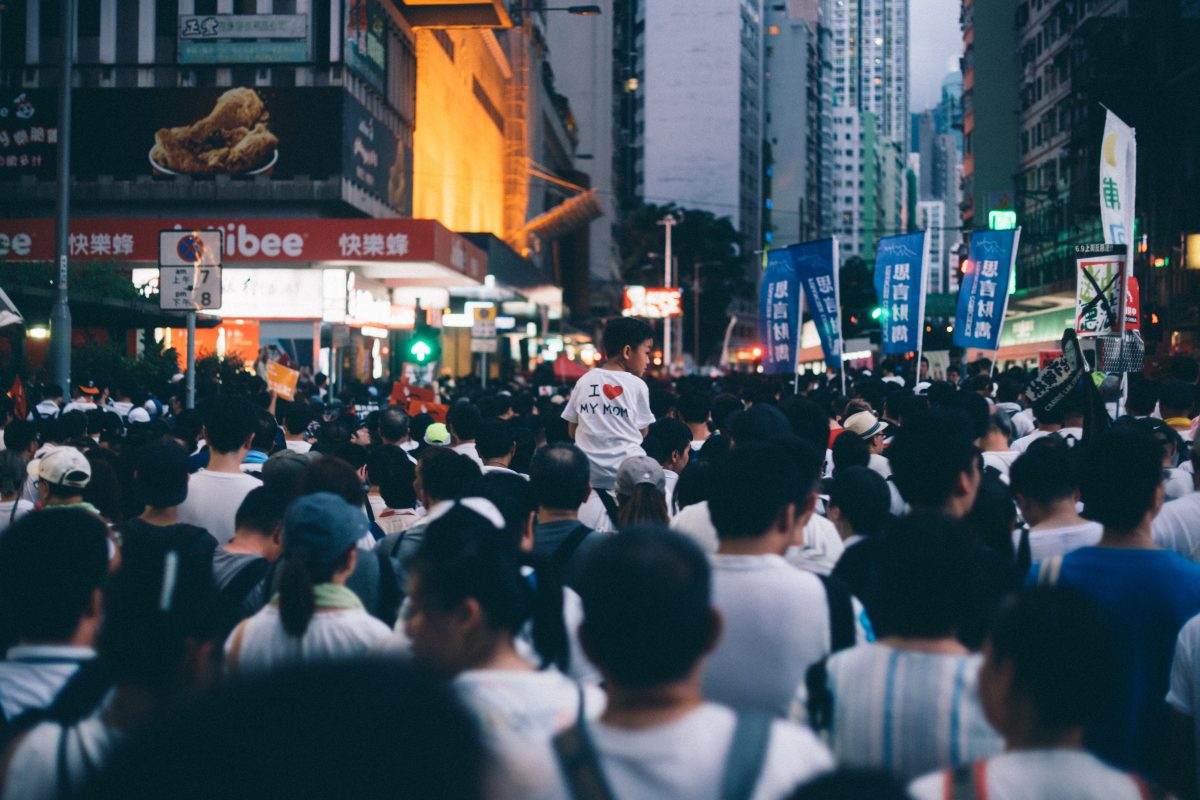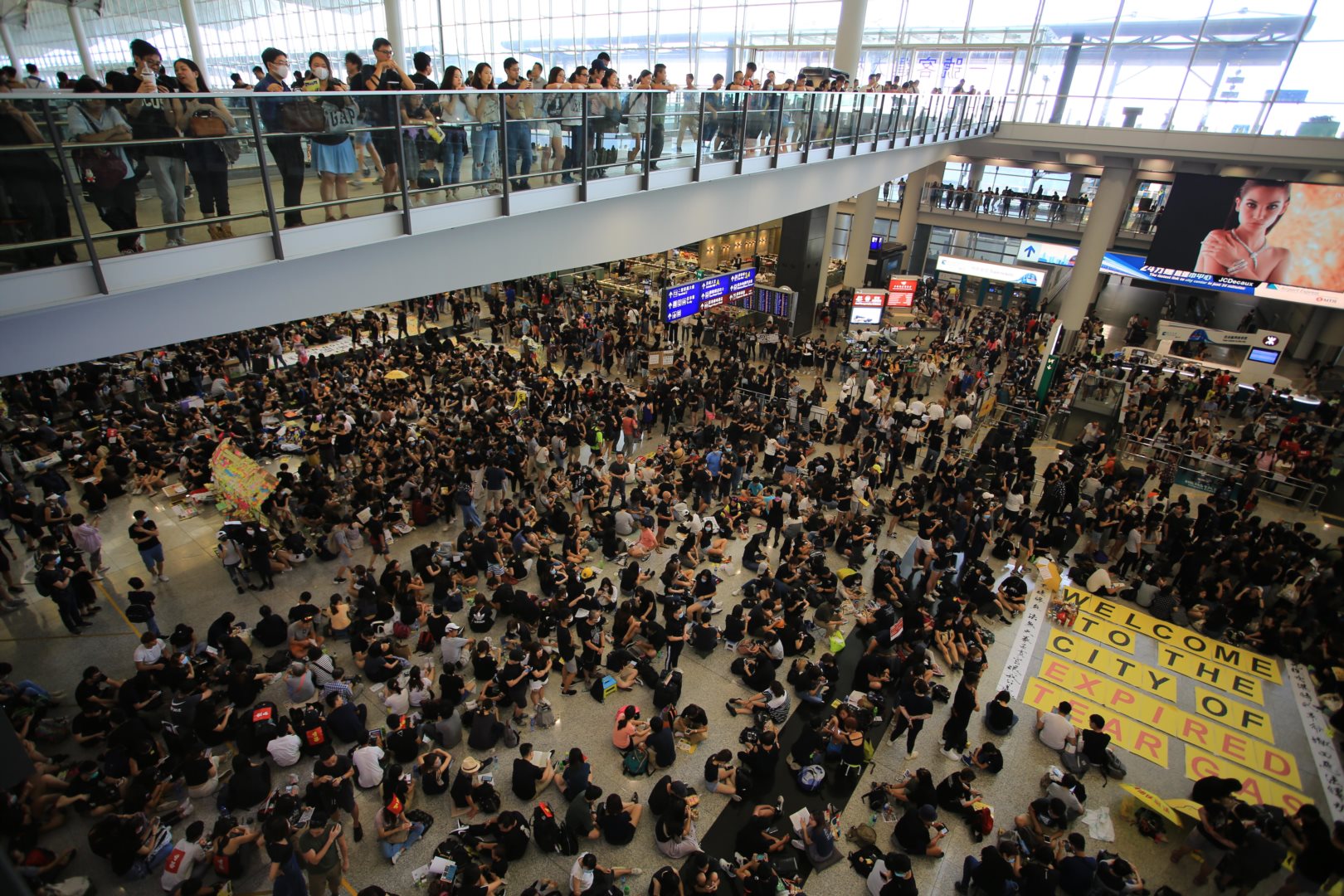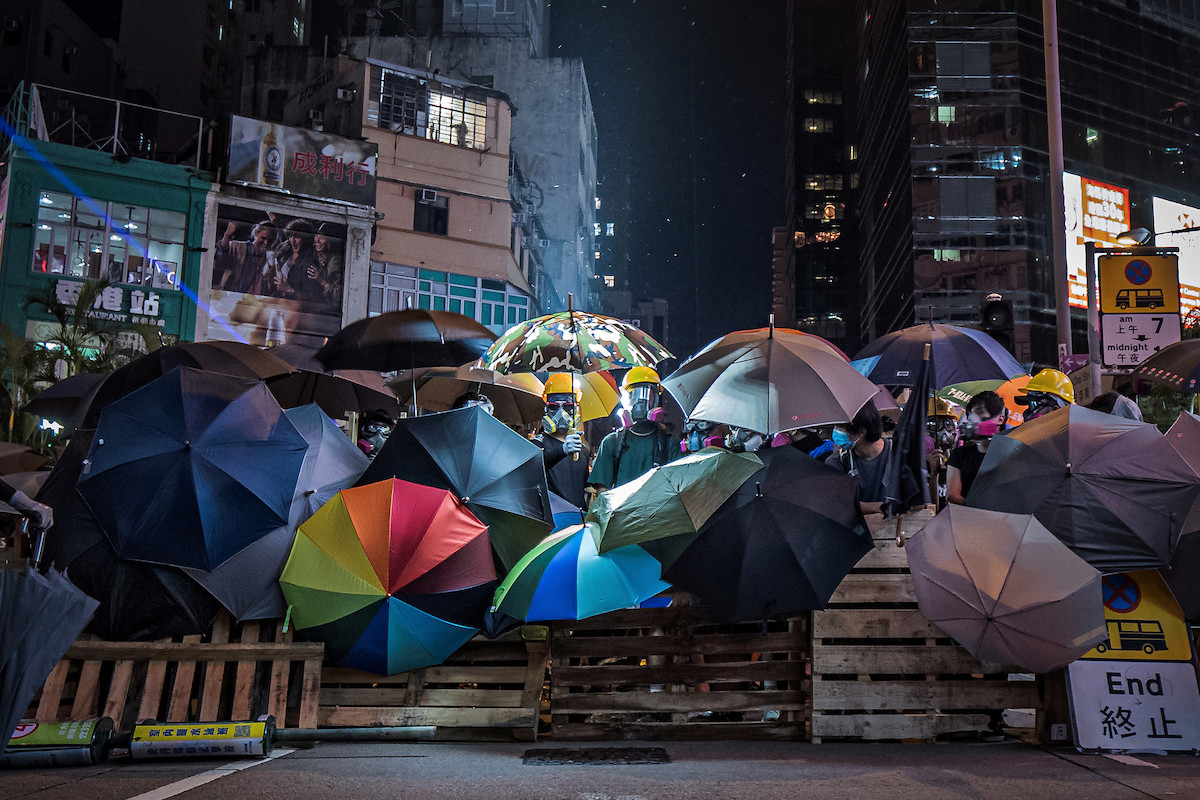Activism
How the Hong Kong Protestors’ Tactical Brilliance Backed Beijing into a Corner
Just as they are doing with seemingly every obstacle in their way, Hong Kong protesters innovated around the need for a strong leader.

Since Hong Kong’s momentous anti-extradition bill protest on June 9th, tensions between the protesters and the authorities have continued to escalate. The demonstration on August 12th which forced the closure of the Hong Kong International Airport suggests that the protesters are unlikely to back down anytime soon, even as the People’s Armed Police of the mainland Chinese government gathers forces in Shenzhen, preparing to possibly use violence to end the protests. The current conflict arose from the introduction of a bill allowing alleged criminals in Hong Kong to be extradited to China which is widely seen as a brash attempt to erode the “one country, two systems” principle.

While the Hong Kong government has refused to meet the protesters’ 5 demands, likely under pressure from Beijing, the protesters have successfully forced Carrie Lam to suspend the extradition bill. Effectively killing the bill is a significant achievement, particularly considering the fact that Carrie Lam, at least to a significant degree, represents the interest of Beijing, which is firmly against legitimizing any kind of political opposition.
One of the reasons for the effectiveness of the protest movement is the decision to remain leaderless. In an op-ed article in 2017, Nicholas Berggruen, chairman of the Berggruen Institute, suggests that resistance movements need strong and charismatic leaders to succeed. Many resistance movements such as the Civil Rights Movement with Martin Luther King Jr., the resistance to apartheid with Nelson Mandela, and the India Independence Movement with Gandhi benefited greatly from such leadership.

But the outcome of Hong Kong’s 2014 pro-democracy movement suggests that the current protests would not be nearly as robust or effective if it did have such leaders. Joshua Wong, the strong and charismatic leader of the Umbrella movement in 2014, was jailed in 2017 for unlawful assembly. With strong leaders present, the authorities can arrest them, fatally weakening a movement. Given the deterioration of the rule of law in Hong Kong, the authorities could conceivably jail all of the movement’s linchpins with considerable ease. But with a leaderless movement, the authorities have no such power. So far, the Hong Kong Police Force has arrested hundreds of protesters while the movement has not lost any momentum because the contribution of no single individual is vital.
Just as they are doing with seemingly every obstacle in their way, Hong Kong protesters innovated around the need for a strong leader. They are using communications technology to be both highly organized and leaderless, leaving the authorities unable to take out any key elements that would cause the effort to collapse.
Where a strong leader would make strategic decisions, the protesters are using a Reddit-like forum called LIHKG where ideas can be upvoted, allowing the best ones to rise to the top. Hong Kong’s largest citywide strike in decades, and the city’s only general strike in 50 years, originated from a post on this forum. Translated from Cantonese, the post read, “Skip work, you may lose your job. But if you don’t skip work, you will lose Hong Kong and your home! Freedom is not free, I beg you, let’s recover Hong Kong.” The ideas that are most representative of the desires of the participants end up going forward, giving the movement a greater degree of legitimacy and likely winning more support from the Hong Kong populace.
Leaderless organization also allows those with the ability and desire to lead to make valuable contributions without taking very much risk or adopting the enormous responsibilities of a leader. When the leaders of the Umbrella Movement were arrested and jailed, the Hong Kong government and Beijing made an example out of them, successfully discouraging others from playing such a role.
This time, Hong Kong protesters are crowdsourcing not only leadership, but every necessary function including delivering supplies (protection, umbrellas, post-it notes, food, roadblocks, cones for controlling the flow of teargas, etc.), getting protesters to particular locations, funding, designing and distributing posters, providing information on risks such as police presence, legal advice, medical attention, and more. Crowdsourcing allows burdens to be distributed much more widely than does formal organizing.
Of course, the movement’s leaderless organization could also prove to be a disadvantage. In her book, Twitter and Teargas: The Power and Fragility of Networked Protest, techno-sociologist Zeynep Tufekci observes that formal organizing has key advantages for resistance movements. The tiresome and costly planning associated with organized resistance also helps to make a movement more resilient. With higher sunk costs, people would be less willing to abandon their cause.
Hong Kong protesters’ leaderless approach may also be a disadvantage because more radical demonstrators can take protests too far, damaging the credibility of the movement. While the protests have been largely peaceful, violent outbreaks are an ongoing problem. When violent protesters occupied and vandalized the Legislative Council building on July 1st, many of their sympathizers felt they had gone too far. Most recently, protesters brutally attacked 2 individuals suspected of being agents of Beijing at the Hong Kong International Airport. Such events risk alienating supporters and lending credibility to the CCP’s defamation of the movement.
Nonetheless, under the conditions in which they find themselves, leaderless organization appears to be the only viable approach. In addition to preventing over-reliance on key individuals by utilizing technology, the protesters do not rely on any single communications platform. When Telegram suffered a denial of service attack originating from Mainland China or when the mobile networks were overloaded, protesters turned to Airdrop to send messages over Bluetooth. They are even using Tinder and Pokemon Go to mobilize protesters.
Another element to the protesters’ resilience was the decision to abandon the occupation strategy used in Occupy Central protests of the Umbrella Movement in exchange for a highly fluid approach. The protesters package and sell this guerilla approach with the phrase “Be Water” coined by Bruce Lee. With this phrase, the protesters are making a counter-intuitive strategic insight into crisp, elegant, and motivating message. Having arisen from people’s fear of being arrested, the subtext of the phrase is that being strong and effective doesn’t mean standing your ground. It means retreating to fight another day. The reason the Umbrella Movement was not more successful was, in part, its rigidity. Protesters stayed mostly in one place where they could be identified, monitored, and eventually arrested. The protesters saw that a fluid approach, where swift retreat from momentary danger is not seen as cowardice, would be a stronger one under Hong Kong’s undemocratic conditions. This insight, which the protesters are putting to great practical use, is the legacy of ancient Chinese philosophy for governance and military strategy. Lao Tsu said, “Nothing is softer or more yielding than water. Yet, given time, it can erode even the hardest stone. That’s how the weak can defeat the strong, and the supple can win out over the stiff.”
In addition to fighting in the streets, protesters are fighting for global control over the narrative, a difficult task when up against the vast resources of Beijing. The protesters have been remarkably successful in attracting sympathetic global media coverage. By contrast, the contemporaneous pro-democracy protests in Moscow, also significant in their size and intensity, are attracting far less attention. One of the reasons for this success is that Hong Kong protesters have provided a thick flow of enthralling stories for the media to pick up on. After the police blinded a female protester in one eye with a beanbag round, the protesters spun the incident into a story fit for the viral video age. At least a dozen news outlets reported that the protesters are wearing eye patches as a symbol of their struggle. A video from the Straits Times show a young protester with a post-it note over her eye saying, “We need the world to see how shameful the Hong Kong police are.” Even the highly symbolic incidences of property destruction, such as replacing the People’s Republic of China flag with a Hong Kong Independence Flag or defacing the Legislative Council building, provide engrossing stories of the protesters’ anger and their shortcomings.
Through all of this, the Hong Kong protesters are showing the world highly effective tactics and principles for resisting authoritarianism. While the Chinese government is teaching autocrats how to leverage cutting edge technology to tighten their grip on power, the Hong Kong protesters are developing principles for democracy activists around the world on how to maximize effectiveness against all the odds. The Hong Kong protesters may not end up being the successful “David” against the “Goliath” Hong Kong and Mainland authorities. But they have made more progress towards that end than anyone could have expected or anticipated through their innovation, organization, clarity, and determination.

The protesters are fiercely resisting what most see as China’s inexorable absorption of Hong Kong. Given the Chinese Communist Party’s (CCP) clear interest in eroding much of what makes Hong Kong distinct from the mainland, its sheer power and resources, and its track record for how it handles dissent, such resistance seems naive, even suicidal, to many. And yet, for Hong Kongers, the desire to preserve their freedom and society isn’t something they are particularly willing to give up. Moreover, China’s rapid turn towards totalitarianism since Xi came to power only drives home the need for Hong Kong to resist this encroachment.
The protesters themselves have awoken much of the city out of complacency, exposing the true colors of their system and the degree to which Beijing influences it. They have seen the police consistently useexcessive force and deny their right to protest. They have seen triads (pro-Beijing Chinese mafia) employed (likely by Beijing) to attack the protesters. They have seen that the Hong Kong police dressed up as protesters to savagely beat and arrest protesters. It stands to reason that they are now more aware of what their future and their children’s future will look like if they do not resist.
Even if the Hong Kong protesters ultimately fail to achieve their objectives, and the mainland Chinese government continues to erode the autonomy of Hong Kong, it is difficult to overstate the pressure they have put on the CCP. The protesters have successfully and brazenly undermined the CCP’s approach to ruling China, which is characterized by the total control of the party. When Hong Kong engages in such protests for months on end, it makes a deafening broadcast that Hong Kong is different from China, as it would be inconceivable for such a thing to take place in mainland China. The people of Hong Kong have done this as the whole world watches, humiliating the CCP.
The protesters have demonstrated that stripping Hong Kong of its freedoms remains as risky as ever. If the CCP thought that it could get away with turning Hong Kong into just another Chinese Tier 1 City without significant resistance, it was sorely mistaken. However, it is difficult to say how these events will impact the CCP’s calculus moving forward. On the one hand, they may wish to eliminate Hong Kong’s liberties more rapidly and forcefully than before to prevent this kind of chaos from happening again. On the other hand, the CCP might also opt to leave Hong Kong alone for the time being, given that it realizes it can’t simply ignore the beliefs and distinct identity of the Hong Kong people.
In spite of the variety of headaches that the Chinese government faces today, it remains the most effective and economically successful dictatorship of all time. The Hong Kong protesters’ willingness to boldly confront such a formidable force, and so tactfully, sets an example for others around the world attempting to resist authoritarianism.






